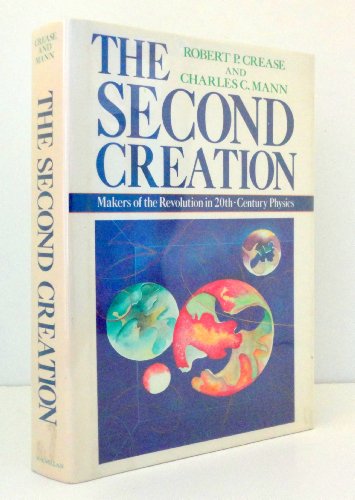Synopsis
The Second Creation is the intimate story of the decades-long scientific quest for "unification," a theory that draws together all matter and energy, from the hottest supernovas to the whirring fragments of the atom. Based on scores of in-depth interviews with such brilliant scientists as Max Planck, Erwin Schrodinger, Richard Feynman, Murray Gell-Mann, Sheldon Glashow, and Steven Weinberg, Robert Crease and Charles Mann vividly portray the tense, exciting world of investigators at the last frontier of knowledge. In telling the richly human story of the two generations of scientists who set out to find the "theory of everything," the authors recount a sweeping saga that moves from the early days of Albert Einstein and Niels Bohr arguing in a Copenhagen park to the vast, mile-long atom smashers of today. The Second Creation is a definitive group portrait of twentieth-century physics. Robert P. Crease is an associate professor of philosophy at SUNY--Stony Brook. Award-winning science writer Charles C. Mann is a contributing editor of The Atlantic Monthly and Science magazine. His most recent book is Noah's Choice.
Reviews
A perfect model of "free enterprise" at work is the competitive-cooperative pursuit of knowledge about nature's fundamental particles by our century's physicists. Columbia University science historian Crease and Technology Illustrated editor Mann here trace virtually the entire story of what is today known as particle physics from Einstein's 1905 theory suggesting matter was both particles and waves, while at the same time Rutherford made his first proposals about the nature of the atom, through Bohr, Dirac, Schrodingersp?/have no way to check, so leave it.gs and others who developed quantum theory and quantum mechanics. These authors describe the heated arguments, debates, conferences and world-wide exchanges that took physicists, especially in the 1970s, to the discoveries of quarks, mesons, gluons and other such breakthroughs. Today, decades after Einstein's failure, Unification theories tying together the four fundamental forcesthe fourth, gravity, remains elusive, howeverare formulated almost daily. This is a demanding book, and gripping in an epochal sense.
Copyright 1986 Reed Business Information, Inc.
This is the latest effort at a popular treatment of the "Grand Unified Theory" contemporary theoretical physicists are aiming to achieve. It presents a human-interest-style history of quantum electrodynamics and the ensuing elementary particle theory, enlivened by brief sketches of many of the key participants. As a whole, it is an entertaining volume, but some of the judgments and interpretations are questionable. Also, the complex mathematics of modern physics is entirely omitted, and a novice is likely to end his reading with some notion of the historical background but without a coherent understanding of the current "standard model" in elementary particle theory. Recommended, with reservations, for academic and public libraries. Jack W. Weigel, Univ. of Michigan Lib., Ann Arbor
Copyright 1986 Reed Business Information, Inc.
"About this title" may belong to another edition of this title.
